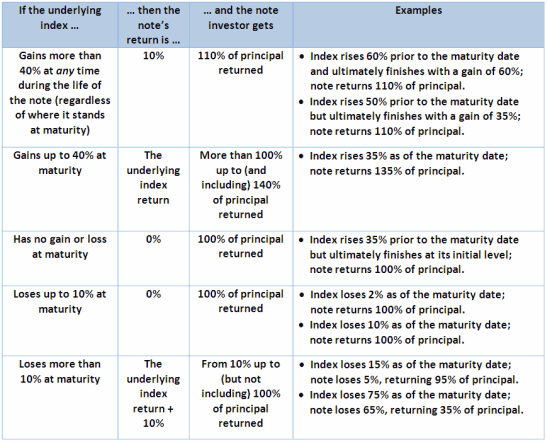SEC Warns Investors About Principal Protected Notes
Post on: 16 Март, 2015 No Comment

More On Legal & Compliance
from The Advisor’s Professional Library
- RIAs and Customer Identification Just as RIAs owe a duty to diligently protect their clients’ privacy and guard against theft, firms also play a vital role in customer identification. Although RIAs are not subject to an anti-money laundering rule, securities regulators expect advisors to address these issues in their policies and procedures. Best Practices for Working with Senior Investors Securities examiners deal harshly with RIAs that do not fulfill their fiduciary obligations toward senior investors, as the SEC and state securities regulators view older investors as particularly vulnerable and in need of protection.
In a low-interest-rate world, high-yield investments offering principal protection are enticing to investors. But the complexity of some high-end investment products has the Financial Industry Regulatory Authority (FINRA) and Securities and Exchange Commissions (SEC) warning investors to look before they leap.
In an alert titled Structured Notes with Principal Protection: Note the Terms of Your Investment, the regulators warn investors that these structured products may not be what they seem. Although they are marketed under a variety of names with a principal protection componente.g. absolute return and minimum returnthe true extent of their safety is never obvious at first glance. Investors need to read the fine print to determine whether they are suitable for their investing needs and risk tolerance.
Structured notes with principal protection combine the guaranteed return of a zero-coupon bond with a derivative component carrying greater profit potential. The derivative component of the note is linked to an index, benchmark or an underlying asset. If the value of the underlying asset increases over the term of the note, the investor may reap a greater return than they would have with just a bond; but that scenario is by no means assured.
The first confusing feature of these notes is that purchase of a structured note with principal protection doesnt entitle the purchaser to ownership of the assets on which payout of the structured note is based. As a result, the notes principal guarantee depends on the financial security of the issuer. If the issuer goes bankrupt, the investor can lose 100% of his or her investment.
Investors also need to understand that the guarantee provided by structured notes with principal protection may not be a 100% guarantee. These structured products can pay back some, or even all, of the investors principal if the investor holds the product to maturityand the principal return function works regardless of whether the assets underlying the product decline in value. But buyer beware: The principal protection function of the notes often doesnt protect 100% of the investors principal and may protect as little as 10%.
Another often misunderstood aspect of structured notes is the method under which returns are calculated. Some notes pay periodic interest payments, others dont. And the market-linked gains component of the notes can vary wildly between products. For example, some compare an index at two distinct dates and others may compare the highest value of the index during the term of the note with its value at the start of the term. Still others (the shark-fin variety) allow full participation in gains up to a certain level and then severely curtail participation if the index rises above that level.

The alert cites a sample note under which, if the index underlying the note rises 40% during the term of the note, the investor will get 140% of principal at maturity. But if the underlying index instead rises 41%, the investor will receive only 110% of principal at maturity. Complex terms may make it difficult for retail investors to get a good handle on the performance of the notes.
Lack of liquidity is another concern raised in the alert. Structured notes often include an early redemption penalty or lock up period during which investors are restricted from withdrawing funds from the note. Although there is a secondary market for some structured notes, low demand may result in investors having to sell their notes at a severe discount.
Another aspect of the notes that investors should be aware of is any right that the issuer has to call or redeem the note prior to maturity. If interest rates fall or it is otherwise in the issuers best interest, the issuer may have the option of cashing out the note. And finally, the alert notes the challenge of determining the fees charged by issuers. Feestaking the form of a spread between the value of the note and the price charged to investorsare often left unstated.
Because even the most sophisticated of investors may misunderstand the terms of these notes, the SEC and FINRA recommend that investors consult with investment professionals before purchasing a structured note with principal protection.
The regulators also note that the features offered by the notes can be cobbled together by investors and their advisors without the added fees built into the products by their issuers, which should give advisors pause when making a suitability determination for their clients.
Reprints Discuss this story














